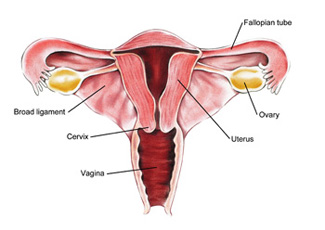About anatomical evaluations, an essential part of fertility testing
 Abnormal female anatomy may lead to infertility or recurrent miscarriages. Dallas IVF has a wide array of state of the art imaging and operative equipment to evaluate female anatomy, specifically the uterus, tubes, ovaries and pelvis.
Abnormal female anatomy may lead to infertility or recurrent miscarriages. Dallas IVF has a wide array of state of the art imaging and operative equipment to evaluate female anatomy, specifically the uterus, tubes, ovaries and pelvis.
Our physicians are trained in the latest techniques, from ultrasound to complicated surgical procedures, to help diagnose and treat the source of your infertility.
Contact
Devoted to you, dedicated to your success
Contact Dallas IVF today to set up an appointment to discuss your fertility options. Now offering telemedicine virtual consults.
Call us: (214) 225-2057
Types of anatomical evaluations
At Dallas IVF, at least one, if not more, of the below evaluations will be requested by one of our physicians when pursuing fertility treatments:
Transvaginal Ultrasound -The principal diagnostic study employed by reproductive endocrinologists and gynecologists to determine the overall female anatomy is the transvaginal ultrasound. The ultrasound will help assess the condition of the uterus and ovaries. Ovarian masses and uterine fibroids can commonly be seen through this simple diagnostic study. Endometriosis, unless it involves the ovaries and is large, can not be visualized on ultrasound.
Sonohysterogram/Saline Infusion Sonogram (SIS) – This office based procedure, commonly performed at Dallas IVF, allows our physicians to view the uterine cavity. During the transvaginal ultrasound, sterile saline is inserted through the cervix and into the uterus through a narrow tube. This well tolerated procedure allows the physician to see the walls of the uterus and evaluate for the presence of intrauterine growths such as polyps or fibroids. Additionally, a SIS is an excellent screening study to determine the location of fibroids and their relationship to the uterine cavity.
Hysterosalpingogram (HSG) – This radiological procedure has been a mainstay of infertility physicians for decades. It is regarded as the principle screening study to help determine if the fallopian tubes are patent (open) or occluded. Additionally, an HSG can help determine if the uterine cavity has any filling defects, including fibroids or polyps. Radio-opaque dye is inserted past the cervix and into the uterine cavity while X-ray images are obtained. HSGs are not always accurate, but are considered a very good screening study.
Office Hysteroscopy – This office based procedure, now available at Dallas IVF, allows our physicians to directly view the uterine cavity. A thin hysteroscope (a small fiber optic camera) is inserted through the cervix and advanced into the uterine cavity with the patient awake and alert. The procedure does not require anesthesia is very well tolerated. Although the hysteroscope does not allow for visualization of the fallopian tubes, the procedure is a direct view of the uterine cavity and is an excellent diagnostic study that can diagnose fibroids, scarring, polyps, or other intrauterine pathology.
Surgical Evaluation – If your Dallas IVF physician is suspicious for anatomical problems that may interfere with your ability to conceive or maintain a pregnancy, surgery will be recommended. Common indications for surgery include blocked fallopian tubes, endometriosis, and adhesions (intra-abdominal scar tissue). Common surgical procedures to diagnose and treat infertility include operative hysteroscopy, diagnostic and operative laparoscopy, and abdominal myomectomies (the removal of large fibroids through an abdominal incision). The physicans at Dallas IVF have decades of training and experience in performing complicated surgical procedures utilizing the most current techniques to diagnose and treat infertility. To learn more about surgical treatments of infertility, please click here.